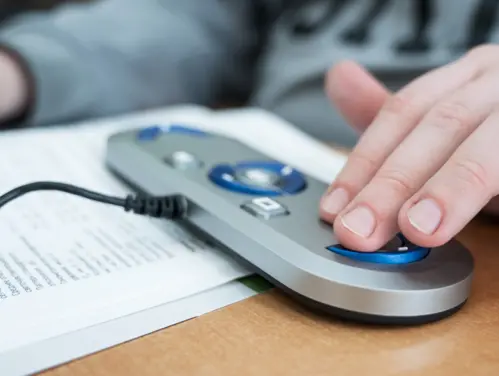For a student who falls behind in literacy, there can be a cascading effect on all other subjects. After all, if reading is a challenge, so it goes for all other topics – such as social studies and science – that rely on the assumption the student knows how to read. The end result is that the student’s academic trajectory plummets, with possible lifelong negative consequences.
Traditionally, educators turn to interventions – usually one-on-one work designed to mitigate the student’s literacy deficiency. But Craig Barnum, the chief information officer for the Cedar Rapids Community School District and a freelance consultant, says there is a better way.
“With interventions, we are not focusing on their strengths, we are focusing on their weaknesses,” he said. “The real conversation we need to have is how to actively figure out what kids’ strengths and interests are, and then matching those to our instructional activities. Even the most skill-deficient kids can find their way to success with that approach.”
His solution is providing digital accessibility tools for all students. Essentially, by providing those tools – such as speech-to-text applications or screen readers – they enable students with reading difficulties to keep up academically with their peers on all subjects.
For Barnum, it’s personal.
“I didn’t learn to read until I was about in seventh grade,” he said. “I’m dyslexic. What I had going for me was my mom who was a teacher, but more so than that, she understood that I needed to be exposed to grade-level content. I had the skill level of a 6-year-old, but to keep my interest, I needed to receive content that would interest the 12-year-old me.
“Once she found my interest, I essentially taught myself to read.”
That interest, Barnum said, was science fiction and fantasy stories. By the time he was in eighth grade, he was reading on his own.
The problem with today’s interventions, he said, is that “we are reinforcing in skill-deficient students that ‘I’m not good enough, I am not smart.’ That will put us behind the eight ball every time. It’s not the teacher’s fault, but the practice is systemic in education.”
Incorporating digital accessibility tools into the classroom is a game changer.
“With kids who are struggling with decoding, a ninth grader who is reading with his eyes may be reading at a fourth-grade level, but when he reads with his ears, he often comprehends above grade level,” Barnum said. “These kids realize, ‘oh my gosh, I may have trouble reading, but I am not stupid. I understand this.’ This changes their lives. Their grades go up, and behavior problems go down.”
Barb Guy, the state director of special education and bureau chief at the Iowa Department of Education, likes Barnum’s ideas.
“Craig’s approach to keeping students on academic track while resolving the skill deficiencies is a win-win situation,” Guy said. “This evidence-based approach should be, at a minimum, a consideration of every team’s annual review of the Individualized Education Programs (IEPs).”
Barnum said it’s important that all students in a classroom have accessibility tools, not just struggling readers.
“The power of digital accessibility tools can improve outcomes for all students, not just kids with IEPs,” he said. “In one respect, students who are skill deficient won’t stick out if they aren’t the only ones who have accessibility tools.
“Even if a student is not skill deficient, but still finds the tools useful and helpful, why would we not allow kids to use them? As adults, we all play to our strengths in our work all the time. Why don't we allow students the same respect in our schools? Twenty or even 15 years ago, we didn't have the tools readily available to solve this issue. They didn't exist or were cost-prohibitive to roll out universally. In the post-pandemic world where every student now has a device, this is a very manageable, tangible fix.”
In order to achieve success, Barnum said that in addition to having the software and hardware, there has to be a change in mindset: that all students can learn. And beyond that, teachers and administrators must feel comfortable changing the way they deliver instruction to enhance the accessibility-tool experience.
“Some educators may view this kind of technology as an unfair advantage – they are not,” Barnum said. “If you think as a teacher your job is to separate the wheat from the chaff, then you probably would see it as an unfair advantage. But, then you have to ask what is your role as a teacher, what are you trying to accomplish? What is your purpose? Is that congruent with the state’s vision for what education is? However, if you feel that all students should reach a certain target, then you no longer see it as cheating. Why wouldn’t we allow everyone to use it?”
Barnum said incorporating accessibility tools is an equity issue.
“Historically underperforming subgroups are more skill deficient in terms of their abilities to decode in Cedar Rapids,” he said. “But introduce the technology, and those deficits decrease. We can now remove this barrier for kids.
“The bottom line is this: Why wouldn’t we let kids play to their strengths? If technology enables a kid to read above grade level, why wouldn’t we allow that?”
Subscribe to receive email updates from the Iowa Department of Education.


